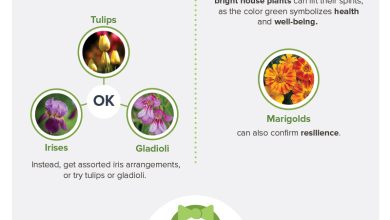Fruit fly: how to eliminate with ecological remedies
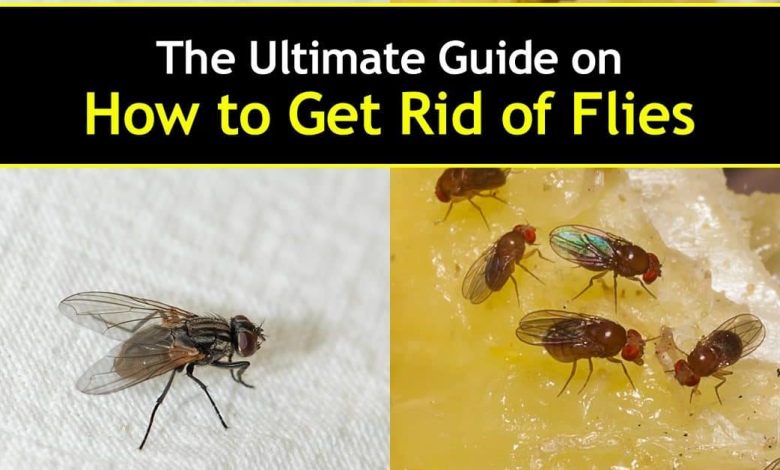
Hello to all agrohuerters! The objective of today’s article is to learn to recognize if we have the fruit fly present in our orchards and what are the different methods to control it.
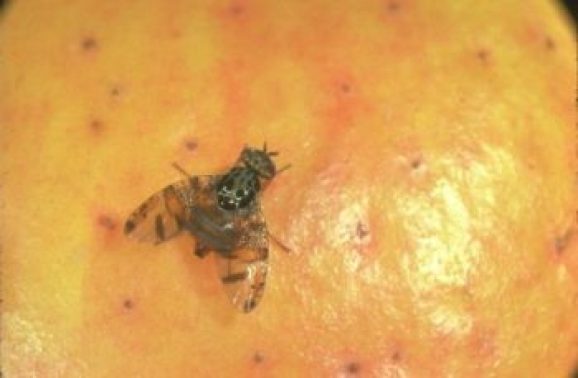
Who is the fruit fly?
Surely you have already heard of the fruit fly because it is one of the most common pests within the Diptera order. Diptera comprise all the flies and mosquitoes we know.
I am going to tell you a secret about this group of insects: they only have one pair of wings because the second pair, over the years of evolution, gradually disappeared until it became 2 small appendages known as rocker arms (which they use to turn). In addition, they say that they are one of the insects that have the best flight thanks to these characteristics.
The fact of having only two wings will allow us to differentiate them from the order of Hymenoptera where bees, wasps, etc. are found. The next day you see a fly, pay attention!
However, we must not be mistaken with this very general term. Who exactly is the fruit fly?
There are two species of flies that are called this way:
- Drosophila melanogaster also known as «vinegar fly». This species of fly usually feeds mainly on fruits in the process of fermentation such as grapes, apples, etc. In addition, it is a species widely used in the scientific world to carry out experiments with it.
- Ceratitis capitata, known as the “Mediterranean fruit fly”, is the fly I am going to talk about today.
Biological cycle of the fruit fly: Ceratitis capitata
This fly comes from Africa and is currently present throughout the Mediterranean area, where it causes significant damage to numerous fruits.
- Adults, as you can see in the photo, have bright colors. They are a bit smaller than the house flies that we always see in our houses. Its eyes are large, its abdomen has yellow and gray stripes, and its wings have spots of various colors.
- The eggs are white, elongated and with a smooth surface.
- The larvae (the one that damages the fruits) are small white worms without legs.
- The pupa is the stage between the larvae and the adults that lasts approximately 1-2 weeks.
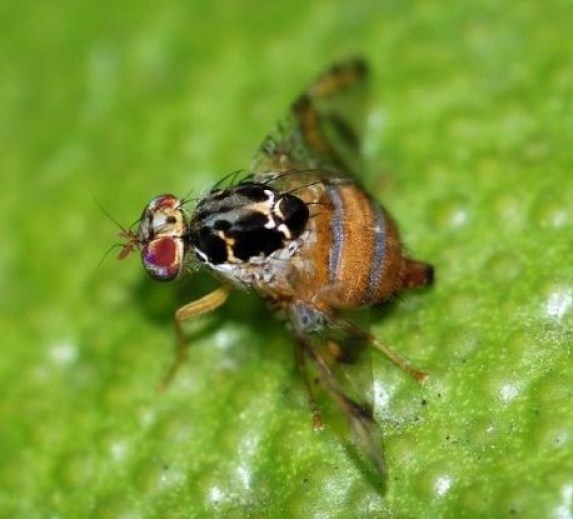
fruit fly damage
Adult flies lay eggs (between 5 to 10 eggs) under the epidermis of the fruits. Once the fruits are infected, the larvae develop inside them. The infected fruit falls prematurely and the one picked from the tree rots immediately. The larvae pupate and pupate in the soil. Once the pupa becomes an adult, they fly away until they re-infect new fruits.
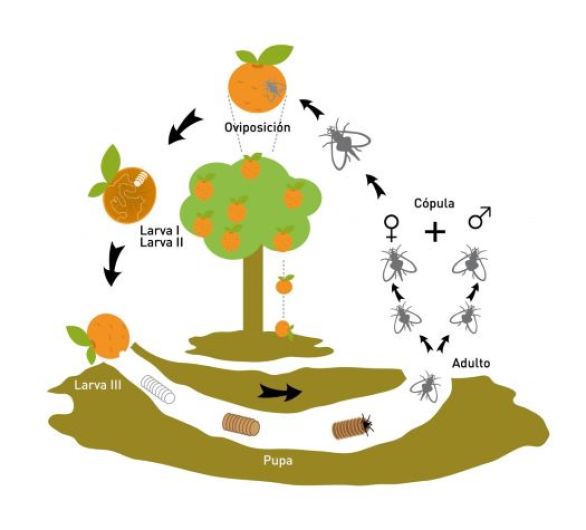
Plants affected by the fruit fly
They prefer fleshy fruits with sweet pulp and the damage is usually more important in late varieties. His favorite colors are orange and yellow. In winter they attack oranges and tangerines. In spring to apricots. In early summer to peaches. In August and September to the rest.
But in general, the main fruits attacked are: peach, apricot, orange, tangerine, figs, grapes, pomegranates, medlars, plums, pears, custard apples, papayas, mangoes, etc.
The presence of stings or simply the laying of the eggs inside causes rejection by the market.
Control methods: how to eliminate the fruit fly
Currently, there are various methods of controlling the fruit fly, among them are:
- Cultural methods: eliminate the affected fruits to avoid subsequent generations.
- Also avoid having food scraps (in bins) near the trees as it will attract these mosquitoes.
- Biological control: there are several natural enemies that can help us drive away flies. Among them, some predators (for example spiders) and parasitoids (Diachasmimorpha tryoni, Diachasmimorpha longicaudata, Fopius arisanus, Pachycrepoideus vindemmiae or Spalangia cameroni) stand out.
- Mix vinegar and soap in a pot, cover with plastic and make holes. Flies will be attracted to the vinegar and then won’t be able to get out.
- There is also some chemical treatment to eliminate them, but it is not recommended since traces can remain in the fruits that we eat.
On the other hand, if your fruits are damaged but you don’t know what could be the cause, here is a link to an article on » fruit damage «.
References
- Capinera, J. (2001). Order Diptera—Flies and Maggots,
Editor(s): John L. Capinera, Handbook of Vegetable Pests, Academic Press, 197-242. - Today, A. (2013). Chapter 13 – Insect Population Ecology and Molecular Genetics, Editor(s): Marjorie A. Hoy, Insect Molecular Genetics (Third Edition), Academic Press, 591-659.
- Aumann, R., Schetelig, M., Häcker, I. (2018). Highly efficient genome editing by homology-directed repair using Cas9 protein in Ceratitis capitata, Insect Biochemistry and Molecular Biology, 101, 85-93.
That’s all for today, I hope you liked this article about the fruit fly and… see you in the next article! Do not forget to leave us comments telling us about your experiences with these flies. Have a nice day!

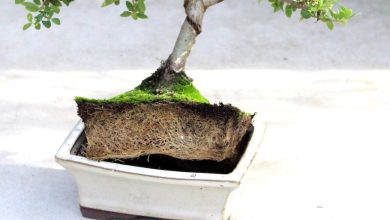
![Photo of Saguaro: [Characteristics, Cultivation, Care and Disadvantages]](https://www.complete-gardening.com/wp-content/uploads/2022/08/saguaro-characteristics-cultivation-care-and-disadvantages-390x220.jpg)

